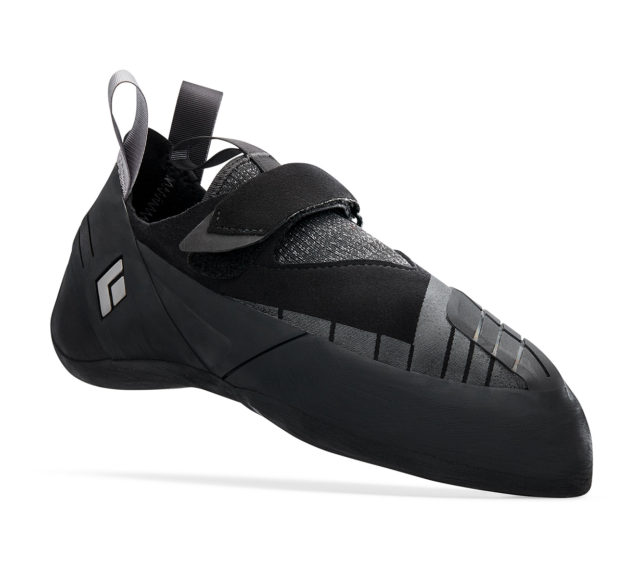
Black Diamond Shadow
Available Sizes: US Men’s 4-13 (including half sizes)
Reviewer Street Shoe Size: US Men’s 9 / EU 42
Size Tested: US Men’s 10 / EU 43
Construction:
- Upper: Microfiber
- Tongue: “Engineered Knit”
- Midsole: “Minimalist”
- Sole: 4.3 mm Fuse Rubber w/ printed rubber on top of toe box
- Closure: Velcro
MSRP: $179.95
Days Tested: ~10 outdoors; ~15 indoors
Test Locations: Bozeman Area, MT; Kalymnos, Greece
Intro
Last year Black Diamond unveiled their first line of climbing shoes, which cover the spectrum from beginner-oriented shoes (the Momentum) to trad climbing (the Aspect) and steep sport climbing and bouldering (the Shadow). As Black Diamond is such a major player in the climbing and skiing hard-goods industry — and has somewhat recently started making apparel as well — I was interested to see how their foray into footwear compared to more established players in the industry. So I took their most aggressive shoe, the Shadow, out at the local crags around Bozeman, MT and also to the extremely overhung tufa caves of Kalymnos, Greece to put it to the test.
Design
The Shadow shoes certainly look unique from most other aggressive shoes on the market. The Shadow’s combo of black on black (I believe this is what is referred to as “murdered out”) is a departure from the flashy yellows, reds, and blues on many climbing shoes. But aesthetics aside, the Shadow presents some interesting design features.
Perhaps the two most interesting features of the Shadow are the combination of 3D-printed and molded rubber and the “Engineered Knit Technology.” Instead of using one layer of cut and glued rubber, the Shadow’s molded rubber wraps around the toe box and meets a layer of printed rubber across the instep of the shoe. Black Diamond claims this combination results in a more dexterity than “normal” cut and glued rubber sheets.
The “Engineered Knit Technology” refers to the liner and fabric of the shoe’s upper. Instead of using leather or a synthetic alternative, Black Diamond constructs the Shadow (as well as their other shoes) with a microfiber knit fabric that supposedly provides more consistent stretch and fit as well as increased breathability.
More on how both of those unique features affect performance later.
Fit
For all the hoopla and fanfare surrounding new climbing shoes each year, the most important factor in determining performance is ultimately the fit. I can’t say that enough. Similar to ski boots, the best climbing shoe is the shoe that combines the features you want with the fit you need. For my feet, that means a shoe with a relatively roomy toe box, high-volume arch / instep, and a narrow heel.
Unfortunately, the Shadow didn’t fit my feet quite as well as I would have liked. Specifically, I found the arch-to-toe-box ratio didn’t quite work for my feet. I sized up to a size 43 from my street shoe size of 42 and still had significant trouble fitting my foot into the shoe because of the lack of volume in the instep area. Once in the shoe though, my toes had a small bit of volume to wiggle around, even as my arch was crushed by the shoe. So, if you’re like me and have a high arch / instep, the Shadow might not be the best choice. But if you’re the opposite, and have a very low instep and want a very snug fit in that area, it’d be worth trying on the Shadow.
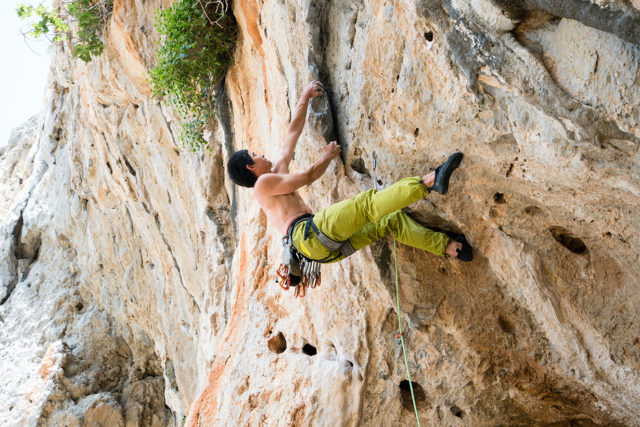
I was interested to see how the knit upper responded to wear in terms of stretching and conforming to my foot, especially since it’s a unique design in the world of climbing shoes. I did not notice any stretch to the Shadow shoes in terms of increased volume, but I did notice increased pliability to the fabric. When first trying to put on the shoes, I struggled for about ten minutes to fit my foot in. Thankfully, as I wore them throughout the day, my foot slid in more easily. However, I did notice that if I did not wear the shoes for a while, the fabric seemed to return to its original state and I struggled to put on the shoes again.
Rubber and Materials
Fuse Rubber
Black Diamond uses a proprietary rubber compound called “Fuse” on the Shadow shoes. While it’s always hard to directly compare shoe rubber as there aren’t standardized tech sheets with measured frictional coefficients or densities, we do our best with anecdotal evidence. The Shadow’s Fuse rubber feels more similar to a soft rubber like Vibram XS Grip or Five Ten Stealth C4 than the harder Vibram XS Edge. I think the Fuse rubber is harder than Five Ten’s Stealth Mi6 rubber (Five Ten’s softest rubber compound), but I haven’t climbed in a pair of shoes with that rubber, so I can’t say for sure.
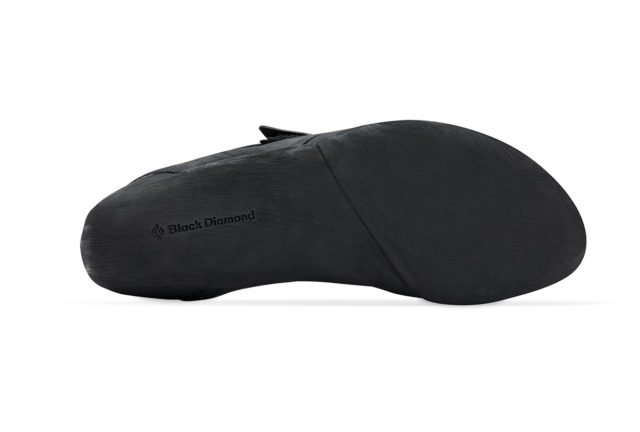
Overall I didn’t think the rubber was the defining characteristic of the shoe, at least in terms of its stickiness or durability. I found it approximately equivalent to XS Grip or Stealth C4 in terms of grippiness and hardness. That is to say, it sticks. Extremely well. Like most modern climbing-shoe rubber. I did notice the Fuse rubber was softer than XS Edge when trying to edge with the Shadow shoes. Where XS Edge would hold its shape even with my full body weight on a dime-edge, the Shadow’s Fuse rubber started to deform and rolled off more easily.
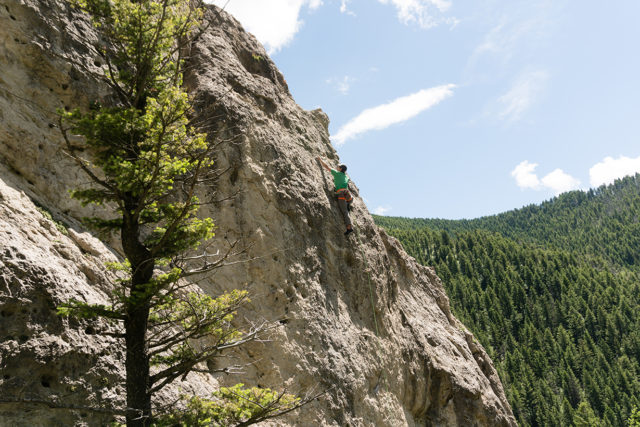
Interestingly for a modern downturned shoe, the Shadow uses relatively thick 4.3 mm rubber on the sole (though that number is perhaps a bit misleading; the sole feels like it’s thinner in the middle and thicker on the edge). And while Black Diamond does not give a stated thickness for the midsole material, based on a hand test it feels about as stiff as the Scarpa Instinct VS which has a stated midsole thickness of 1.0 mm. It’s worth noting that the Shadow’s 4.3 mm sole is thicker than almost every other climbing shoe on the market. Especially when compared to the 3.5 mm rubber found on the Scarpa Furia S, the 4 mm sole on the La Sportiva Testarossa, or the 3 mm rubber on the La Sportiva Futura, the 4.3 mm sole on the Shadow feels like a concrete slab on my foot.
Engineered Knit Technology
I spoke to the fit of the Engineered Knit Technology above, but it’s worth repeating that I did not experience much, if any, stretch with the Shadow shoes. The fabric did loosen up a bit which made it easier to get my foot in the shoe, but the fit itself didn’t change much.
I did notice a marginal increase in breathability when comparing the Shadow to a shoe constructed with a leather upper. The increase was slight, I think mostly because of the large amount of rubber covering the Shadow’s toe box, but my feet did feel cooler around the instep and ankle area when wearing the Shadow.
Performance
This is where I had the most questions about the Shadow shoe. For a company brand new to making shoes, there are lots of variables that need to be addressed. For the past several years, it seems like climbing-shoe manufacturers have been making aggressive shoes softer and softer (e.g., the La Sportiva Futura and the new Scarpa Furia S).
So with Black Diamond’s billing of the Shadow as a highly sensitive downturned shoe, I hopped on a bunch of steep routes and boulders to test that claim.
When climbing in the Shadow on slightly overhung limestone outside of Bozeman, MT, footwork felt challenging both when trying to stand on micro-edges as well as when I went to toe into pockets. For me, it felt like I was wearing a pair of shoes caught between niches. Too soft for standing on edges but not sensitive enough for pulling into pockets.
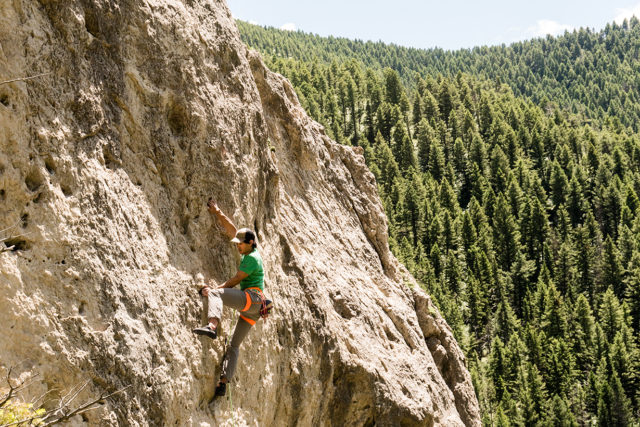
On the wildly overhung tufa caves in Kalymnos, the Shadow shoes performed better than on Montana limestone. The increased rubber on the top of the toe box gave me more confidence when toe-hooking on tufa blobs. Additionally, as the terrain got steeper and the holds bigger, the lack of sensitivity bothered me less and less. I guess when kneebar-ing between tufas the size of baby beluga whales, it doesn’t really matter how sensitive your shoes are. I think that the steeper and more three-dimensional the terrain you’re climbing on (i.e., larger holds), the better the Shadow performs.

Ultimately, with the combination of thick rubber on the sole and a soft midsole, I thought the Shadow fell somewhere in a grey area between a stiffer shoe like the La Sportiva Katana Lace and more sensitive shoes like the Scarpa Instinct VS or La Sportiva Testarossa. The Shadow’s soft midsole contributed to a decreased ability to edge effectively, and the thick rubber led to a decrease in sensitivity when trying to pull onto small foot chips. I found myself questioning my footwork more while wearing the Shadow than when wearing a shoe like the La Sportiva Kataki or even a pair of blown-out Five Ten Moccasyms. (Granted the Mocc is kind of an apples-to-oranges comparison as it’s a completely flat shoe.)
Durability
As one might expect with such thick rubber on the sole, the Shadow is holding up well and I’m not expecting the need for a resole any time soon. The Fuse rubber on the shoes feels roughly equivalent to Vibram XS Grip in terms of hardness, and I often get at least a full season out of that Vibram rubber, so I expect the same of the Shadow. I’ll report back if I notice anything odd with the Shadow’s durability in the future.
I also haven’t seen any delamination issues with the Shadow, a welcome change as I’ve dealt with delaminating rands on many pairs of shoes in the past (looking at you TC Pros). The construction on the Shadow feels very solid and I haven’t noticed any loose threads or unexpected damage to the knit liner.
Bottom Line
The Black Diamond Shadow has a unique combination of traits that make it work best for a very particular group of people. For me, the combination of a poor fit (for my feet) and poor sensitivity negated the advantages that usually come with downturned and asymmetrical shoes. But if you climb in a place with severe overhangs and plentiful footholds and / or you have a low-volume heel and instep and medium-wide toes, the Shadow may, in fact, be the shoe that fits.
